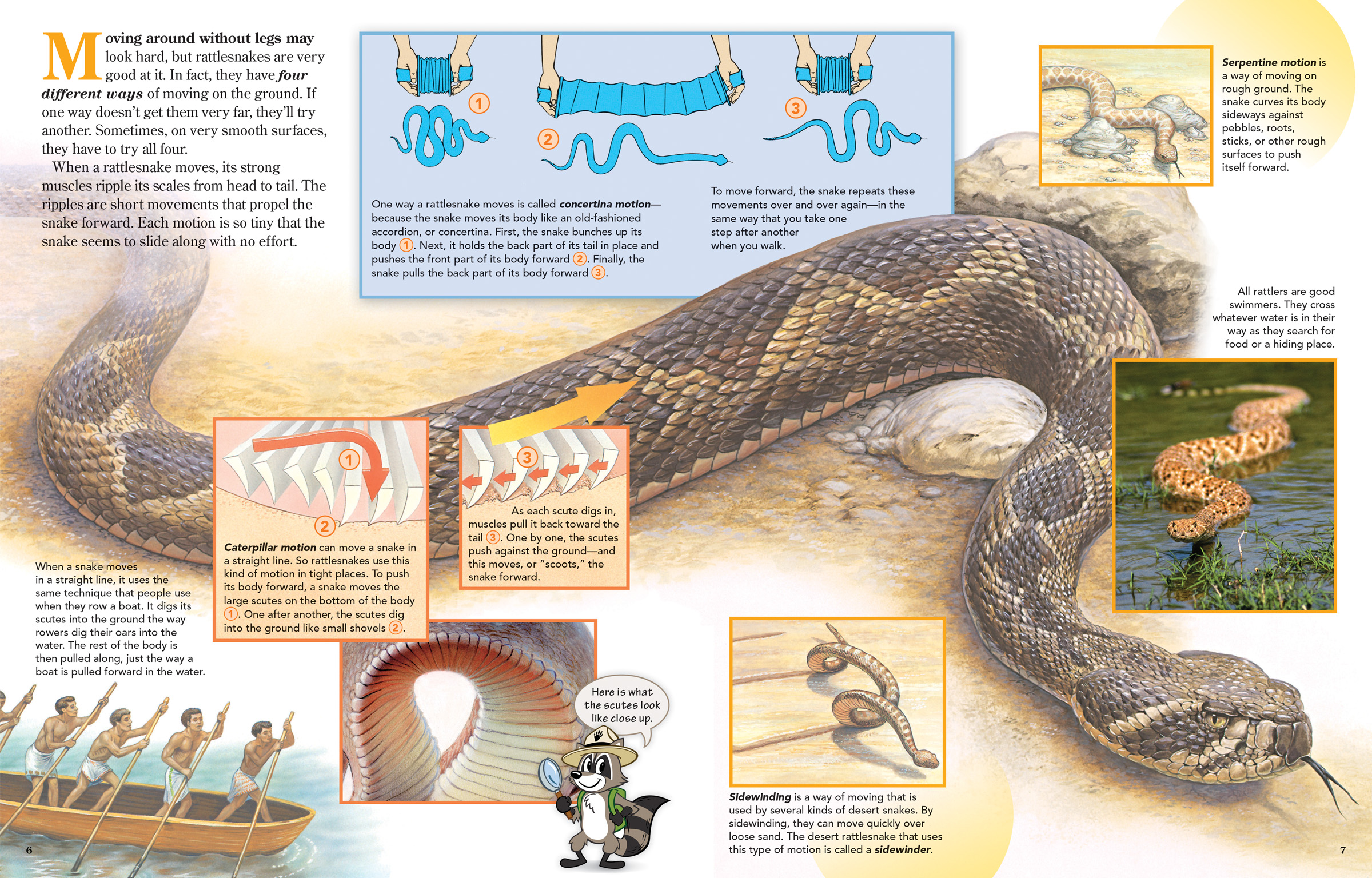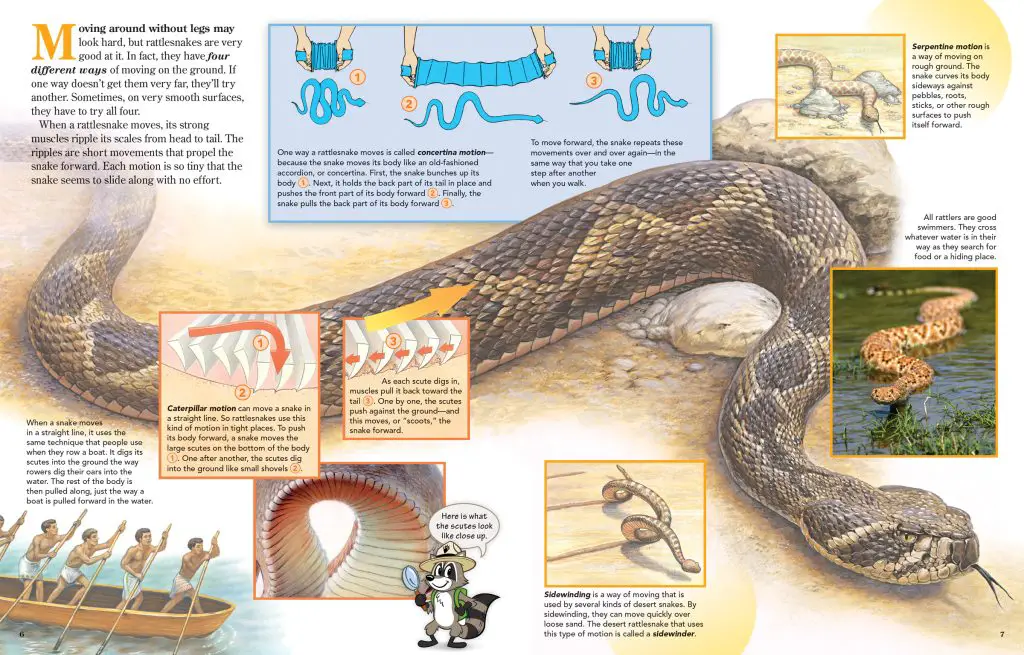Rattlesnakes, the venomous reptiles with a signature rattle on their tail, are fascinating creatures. They have developed unique communication skills to survive in their environments. But have you ever wondered how they communicate with each other?
In this article, we will explore the different ways rattlesnakes communicate, from the sounds they make to their body language. Get ready to discover the secrets of these intriguing creatures and learn how they interact with one another.
Rattlesnakes communicate through a variety of means, including body posture, hissing, and the rattling sound made by their tails. The rattling sound is produced by the vibration of specialized scales at the tip of their tails and acts as a warning to potential predators or threats. Additionally, rattlesnakes have a keen sense of smell and can use their tongues to pick up chemical signals in the environment. Overall, these communication methods help rattlesnakes avoid danger and interact with their surroundings.

How Do Rattlesnakes Communicate?
Rattlesnakes are fascinating creatures that have been the subject of many myths and legends. Despite their notoriety, most people know little about how they communicate with each other. In this article, we will explore the different ways that rattlesnakes communicate and what these behaviors mean.
1. Chemical Communication
Rattlesnakes use chemical signals called pheromones to communicate with each other. These pheromones are produced in special glands located in the skin and are released into the environment. Other snakes can detect these pheromones using their tongue, which picks up particles in the air, transferring them to a special sensory organ called the Jacobson’s organ.
Pheromones can communicate a variety of information, including the presence of predators, potential mates, and other snakes in the area. They can also be used to mark territory and communicate dominance.
2. Vibrational Communication
Rattlesnakes can also communicate through vibrations. When a rattlesnake shakes its rattle, it creates a distinctive sound that can be heard by other snakes. This sound is produced by the segments of the rattle vibrating against each other.
The sound of the rattlesnake’s rattle can communicate a variety of information, including the snake’s location, size, and potential threat level. Other snakes can use this information to determine if they should approach or avoid the rattlesnake.
3. Visual Communication
Rattlesnakes can communicate through visual signals as well. They have a distinctive triangular head and a patterned body that can be used to communicate with other snakes. For example, a rattlesnake may puff up its body and hiss to communicate aggression or dominance.
They can also communicate using the position of their body. For example, a snake that is coiled up tightly may be indicating that it is ready to strike, while a snake that is stretched out may be indicating that it is relaxed and not a threat.
4. Behavioral Communication
Rattlesnakes can also communicate through their behavior. For example, they may engage in combat to establish dominance or mating rights. During combat, the snakes will rear up and try to push each other down, sometimes biting each other in the process.
They may also engage in courtship behaviors, such as a male following a female and flicking his tongue at her. These behaviors can communicate the snake’s intentions and help them find a mate.
5. Benefits of Rattlesnake Communication
Rattlesnake communication is essential for their survival. By communicating with each other, they can avoid potential threats, find mates, and establish territories. It also helps them coordinate their behavior during combat and other social interactions.
Understanding rattlesnake communication can also help humans avoid dangerous encounters. By recognizing the signals that rattlesnakes use to communicate, we can stay safe and avoid accidentally disturbing them.
6. Rattlesnake Communication vs Other Snakes
Rattlesnake communication is unique compared to other types of snakes. While many snakes use chemical signals to communicate, rattlesnakes are one of the few that use vibrational and visual signals as well.
Some snakes, like the coral snake, use bright colors to communicate that they are venomous and should be avoided. Others, like the king cobra, can make a distinctive hissing sound to communicate aggression.
7. Rattlesnake Communication and the Environment
Rattlesnake communication is closely tied to the environment they live in. In areas with dense vegetation, they may rely more on chemical communication to communicate with each other. In open areas, they may use visual and vibrational communication more frequently.
Changes in the environment, such as deforestation or climate change, can also impact rattlesnake communication. For example, if their habitat becomes fragmented, it may be more difficult for them to communicate with each other, which could impact their survival.
8. Conclusion
Rattlesnake communication is a fascinating topic that can teach us a lot about these amazing creatures. By understanding how they communicate, we can better appreciate their behavior and avoid dangerous encounters.
From chemical signals to visual and vibrational cues, rattlesnakes use a variety of methods to communicate with each other. Each signal conveys important information, from the presence of predators to potential mates and rivals.
While rattlesnake communication is unique, it is also an essential part of their survival. By respecting and understanding their communication signals, we can coexist with these animals and appreciate their important role in the ecosystem.
9. Relevant HTML List Items
- Chemical communication
- Vibrational communication
- Visual communication
- Behavioral communication
- Benefits of rattlesnake communication
- Rattlesnake communication vs other snakes
- Rattlesnake communication and the environment
- Conclusion
10. Relevant HTML Table
| Signal Type | Method of Communication | Information Conveyed |
|---|---|---|
| Chemical | Pheromones | Predator presence, potential mates, rivals, territory |
| Vibrational | Rattle shaking | Location, size, threat level |
| Visual | Body position, patterns | Aggression, dominance, relaxation |
| Behavioral | Combat, courtship | Dominance, mating rights, intentions |
Frequently Asked Questions
In this section, you will find some of the frequently asked questions about how rattlesnakes communicate.
What types of communication do rattlesnakes use?
Rattlesnakes use different types of communication to interact with their environment and other animals. They use visual, olfactory, and acoustic signals to communicate. Visual signals include body posture, coloration, and movement. Olfactory signals involve the use of chemical cues, such as pheromones, to communicate with other snakes. Acoustic signals are produced by the rattle on their tail, which is used to warn predators or to attract mates.
How do rattlesnakes produce their acoustic signals?
Rattlesnakes produce their acoustic signals by shaking their rattle, which is made up of interlocking segments of keratin. The rattle segments vibrate against each other, producing a buzzing or rattling sound. The sound is amplified by the hollow spaces within the rattle, which act like a resonator. Rattlesnakes can produce different types of sounds by varying the speed and duration of their rattling.
What does the acoustic signal of a rattlesnake mean?
The acoustic signal of a rattlesnake is a warning to potential predators or a signal to other snakes. The rattle serves as a visual and auditory warning, indicating that the snake is ready to defend itself if necessary. The sound of the rattle also helps to deter predators by making them aware of the snake’s presence. In addition, the rattle can be used as a mating call, attracting potential mates during the breeding season.
Can rattlesnakes communicate with other species?
Rattlesnakes communicate primarily with other members of their own species, but they can also communicate with other species. For example, they can use their visual and olfactory signals to interact with other predators or prey in their environment. They may also use their acoustic signals to communicate with other snakes, such as gopher snakes, which have been known to mimic the sound of a rattlesnake’s rattle to deter predators.
How do environmental factors affect rattlesnake communication?
Environmental factors can have a significant impact on rattlesnake communication. For example, background noise from wind or water can make it more difficult for other animals to hear the rattle. In addition, temperature and humidity can affect the quality and range of the acoustic signal. Rattlesnakes may also change their communication strategies depending on the time of day, season, and other environmental factors.
How DO snakes communicate?
In conclusion, rattlesnakes are fascinating creatures that possess a unique way of communicating. They use their rattle to warn potential predators or threats to stay away, and also use pheromones to communicate with other snakes. However, there is still much to learn about how these snakes communicate and interact in their natural habitat.
Studying the communication methods of rattlesnakes can also have practical applications in the field of animal behavior research and conservation efforts. By understanding how these snakes communicate with each other and their environment, we can better protect them and their natural habitats.
Overall, the study of rattlesnake communication is an important area of research that can shed light on the behavior and communication of other animals. It is a fascinating and important topic that deserves further exploration and study.

